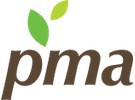The National Retail Federation expects overall retail sales to have increased by 10.5% in 2021 as part of the economic boom fueled by stimulus money in the United States. According to PMA’s interviews with U.S. floral buyers, the floral industry expects the trends of historic sales and constricted product availability to continue into 2022. U.S. consumer expenditures on flowers and potted plants in 2021 exceeded expectations, and retail floral buyers are expecting sales to continue growing until 2023. Retail optimism extends to all categories of floral, with retailers noting that consumers are opting for higher-ticket items, specialty items, and potted plants.
At the same time, a Floranext survey of 311 florists confirmed that flower and hard good prices increased during 2021. A quick review of IRI POS data indicates that overall, products in the supermarket floral
department were 7% higher over the past year, with price increases in arrangements and potted plants leading the way. This highlights opportunities for the floral industry to introduce new products and new price points through supermarkets.
Supermarkets face compelling reasons to raise floral product prices: increased costs, increased wages, and inflation. However, according to the Harvard Business Review (HBR), compensating for increased costs and wages with higher prices does not always guarantee a profit. HBR suggests being mindful of competition’s pricing, providing a data-backed narrative on why prices are increasing, testing good, better, best strategies, providing price-sensitive customers with options, and reviewing the prices of floral offerings individually.
Floral market optimism comes with a word of caution. According to kingsolutionglobal.com, the U.S. gross domestic product grew at an annualized rate of 6.5% in the second quarter of 2021, well short of the predicted 8.5%. Production bottlenecks and supply shortages kept the economy from growing as fast as expected.
Read the complete report here.
For more information: PMA
PMA
www.pma.com
